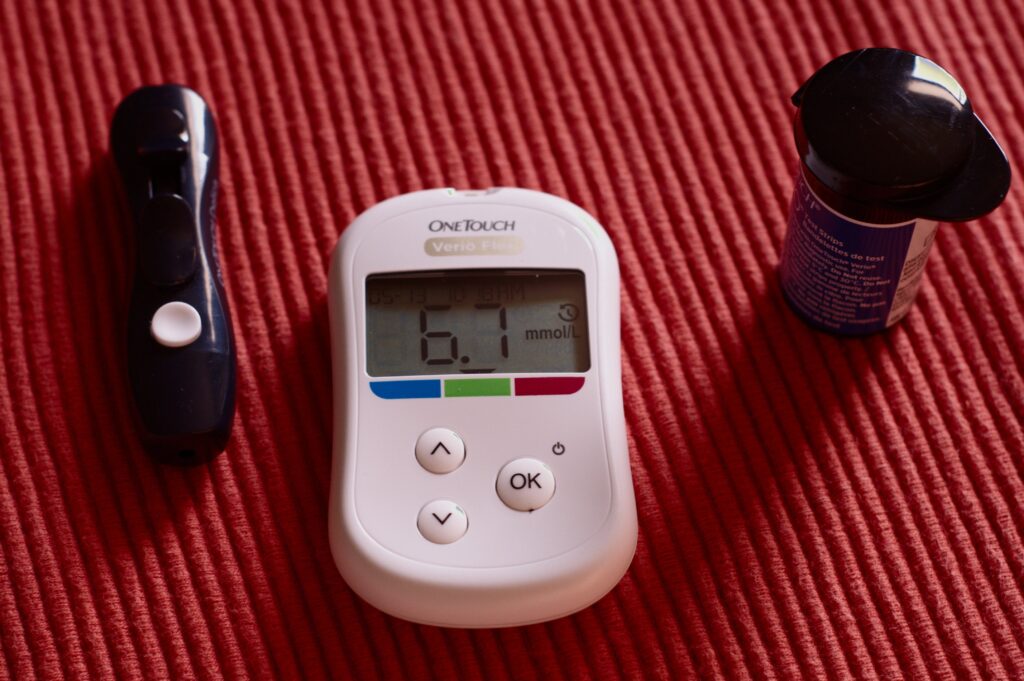Mucormycosis or black fungus is a rare fungal infection, turns serious when it occurs. The main reason behind mucormycosis is a group of molds known as mucormycetes. Mucormycosis or black fungal infection commonly affects people with a poor immune system. Mainly the poor immune system occurs due to some disease. Many diseases result in poor immune systems example, AIDS, Cancer, or even in Covid 19. So recently, in covid, sufferers reported mucormycosis.
Mucormycosis affects the lung or sinus primarily after inhalation of fungal spores from the air through breathing. But It can also occur in other parts of the body such as the digestive tract, skin, heart, etc.
Mucormycosis Types:
There are five types of mucormycosis
Rhinocerebral Mucormycosis (Sinus and brain Mucormycosis)
Rhinocerebral Mucormycosis is basically the black fungus infection that occur in sinus and brain. In Rhinocerebral mucormycosis a sinus very quickly infection may spread to the brain and lead to a fatal outcome if not treated early. It is commonly seen in people with uncontrolled diabetes and kidney transplant patients.
Pulmonary Mucormycosis (Lung Mucormycosis)
It is most commonly seen in cancer patients and stem cell transplant, organ transplant patients.
Gastrointestinal Mucormycosis
This type of mucormycosis or black fungal infection commonly occurs in premature, low birth weight infants less than one month of age, infants under antibiotics or surgery because these lower body’s immunity to fight against germs.
Cutaneous or Skin Mucormycosis
This type of mucormycosis occurs when there is a break in the skin, such as skin trauma, afterburn, after surgery, etc. As there is a break in the skin, the fungus can easily enter the body through the skin and cause black fungal infection. This type is most commonly seen in people who do not have poor immunity.
Disseminated Mucormycosis
Here, the fungal infection spreads other parts of the body through the bloodstream of the body. It affects mainly the brain, and other organs such as the spleen, skin, heart may also get affected.
Fungi Responsible for Mucormycosis
Types of fungi that most commonly cause mucormycosis are the following
Mucor species, Rhizopus species, Rhizomucor species, Cunninghamella bertholletiae, Apophysomyces species, Syncephalastrum species, and Lichtheimia (formerly Absidia) species.
Mucormycosis Symptoms
In mucormycosis, rapid onset of tissue necrosis occurs with fever or without fever. Necrosis occurs because of invasion of blood vessels and ultimately thrombosis.
Symptoms of black fungal infection depend upon the region that is where the fungus is growing.
Symptoms of sinus and brain mucormycosis
Headache, Fever, Facial swelling in one side of the face, Nasal congestion, sinus congestion, black lesions in nasal bridge and inside the mouth in the palate that becomes severe within a short period of time.
If the infection spreads further, then drooping of the upper eyelid (ptosis), protrusion of the eyeball (proptosis), loss of extraocular muscle function, vision disturbance may occur. Black necrotic lesions inside the mouth on the hard palate and/or nasal turbinate, black pus draining from the eyes are important signs to diagnose mucormycosis.
Symptoms of lung mucormycosis
Cough, Shortness of breath, Chest pain, fever.
Symptoms of skin or cutaneous mucormycosis
The infected area has blisters or ulcers that may turn black. The infected area may also have excessive redness, swelling, warmth, and pain.
Symptoms of gastrointestinal mucormycosis
Nausea, Vomiting, Abdominal pain, gastrointestinal bleeding.
Symptoms of disseminated mucormycosis
Symptoms of this type of mucormycosis vary from patient to patient. This type of mucormycosis occurs in patients with other medical conditions. Hence, particular symptoms related to mucormycosis are difficult to know. Patients with disseminated mucormycosis with brain infection may progress into a coma.
Mucormycosis Risk Group
Mucormycosis or black fungal disease is rare but can occur in persons who have lower immunity ( such as under medication, who has any other condition or health problems, etc.) so that the body cannot fight against germs, and mucormycosis occurs.
Mucormycosis occurs more commonly in patients with
- Diabetes
- Cancer
- Organ transplant
- Stem cell transplant
- Long term use of steroid
- Low number of white blood cells (Neutropenia)
- Overload of iron in the body
- Skin injury due to trauma, burn, surgery, etc.
- Premature and low birth weight infants
- Patients under chemotherapy drugs
- Poor nutrition or malnourishment
- AIDS
PEOPLE WITH COVID 19 ARE AT INCREASED RISK OF GETTING BLACK FUNGAL INFECTION (MUCORMYCOSIS)
Recently India has seen a surge of mucormycosis or black fungus disease cases in corona survivors. Most of the cases reported are in patients over 35 years of age. Because due to corona, the immunity of patients decreases. Additionally, due to covid, the steroid is given as medicine, so these steroids further lower the immunity in patients, so the body cannot fight against germs, and mucormycosis develops.
How does someone get mucormycosis
Fungal spores are in the environment. So when one inhales spores through breathing, then lung infection or sinus infection can occur. Skin mucormycosis can occur when fungus enters the skin through a break due to trauma, burn, surgery, etc. Gastrointestinal mucormycosis occurs from ingestion of the fungus responsible for mucormycosis.
Is Mucormycosis Contagious
No, it is not contagious.
How can one lower the risk of mucormycosis
Fungi are common in the environment, so it is challenging to avoid fungal spores. There is no vaccine for the prevention of mucormycosis. Still, people with a weak immunity(immunocompromised) can take several measures to decrease the chances of getting mucormycosis or black fungal infection.
- Avoid areas with a lot of dust, such as construction sites, excavation sites. Wear a face mask like the N95 mask in these dust regions.
- Avoid direct contact with contaminated water such as flood water, water damaged buildings, etc.
- Avoid close contact with soil or dust in various activities ( For example, in gardening)
- Wear shoes, covered dress when doing outdoor activities such as gardening, yard work, visiting wooden areas.
- Wear gloves during handling soil, manure, moss, etc.
- If any skin injury occurs and is exposed to soil or dust, immediately clean the injured area with soap and water.
- Antifungal medication: In high risk people, the doctor may prescribe antifungal medication.
Where Mucormycosis comes from
The fungi that cause black fungus disease or mucormycosis are present in the soil in decaying organic matter (leaves, compost piles, animal dung. They are more commonly present in soil than air. They are also more common in summer and fall.
People may contact fungal spores every day, but people with normal immunity can fight this fungus. So the fungus can cause no harm to them. But people with a poor immune system can not resist this infection, and mucormycosis occurs.
Mucormycosis Diagnosis
Based on symptoms, medical history, physical examination, the doctor may give a laboratory test to diagnose mucormycosis. Healthcare providers may collect fluid from the nose, throat( respiratory system) as a laboratory sample for diagnosis if there is a suspect of sinus or lung mucormycosis. A tissue biopsy may also be done by taking out a sample of infected tissue from the affected region. This tissue is examined in a laboratory in fungal culture or under a microscope to diagnose mucormycosis. Imaging tests such as CT scan, MRI of affected region (for example, sinus, lung, etc .) may also be needed to determine the spread of infection.
Mucormycosis Treatment
Mucormycosis or black fungal infection is a serious medical condition, so it needs immediate medical consultation. The antifungal drugs that are used to treat this infection are Amphotericin B, Posaconazole, Isavuconazole. Drugs are given through the intravenous route or mouth (Posaconazole, Isavuconazole) depending on the severity of the infection. When the infection is severe, then medicines are delivered through the intravenous route.
Sometimes, surgery is needed to remove the dead infected tissue, mainly for rhinocerebral, gastrointestinal and cutaneous infections. Removal of infected tissues restricts the fungus from spreading. In severe cases removing parts of the nose or eye is needed.
Control of underlying medical conditions responsible for weak immunity is recommended.
Mucormycosis Complications
Complications of mucormycosis are –
- Blindness
- Nerve damage
- Blocking of the vessel
- Blood clots in other parts of body
- Organ Failure etc.
Mucormycosis Patient Response
The factors that determine the final outcome of the disease are- how early the disease is diagnosed and how early the treatment is given to the patient, the site of the infection, the patient’s immunity, and if the patient has any underlying medical condition.
If early treatment is given, then there is more chance to cure. If any underlying disease of the patient is under control, there is a better chance to cure. The level of immunity determines the overall outcome, more weaker immunity; there is less chance to get a cure. The overall mortality rate is 50 percent.
Takeaway
Mucormycosis becomes if treatment starts late. Overall immunity of the body plays a vital role to fight against Mucormycosis. Those with weak immunity due to any underlying medical conditions, medicines intake or any other reason should be more cautious. It is not that every weak immune person is getting Mucormycosis but when your immunity is poor you should take all the preventive measures. Stay safe and healthy.





